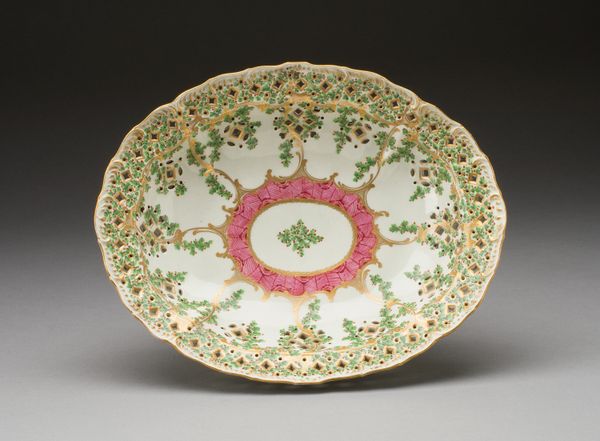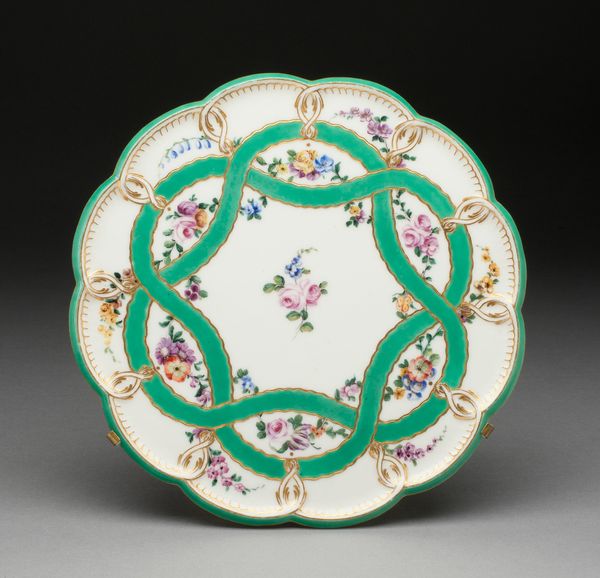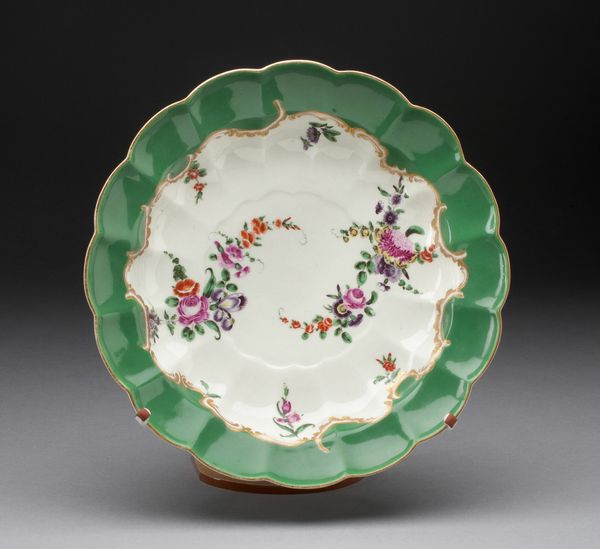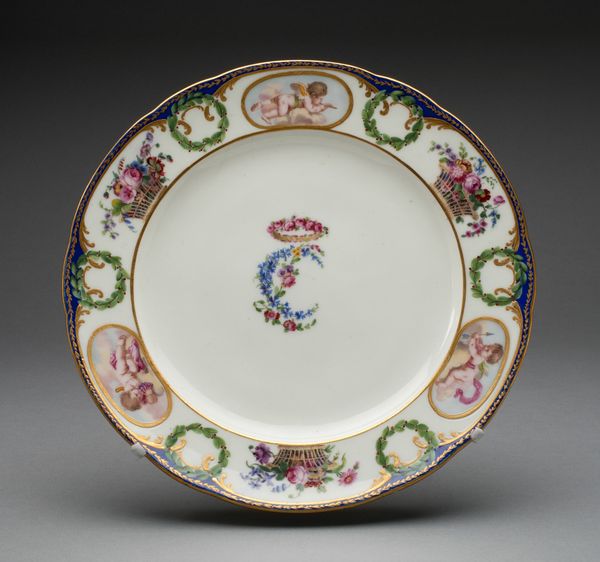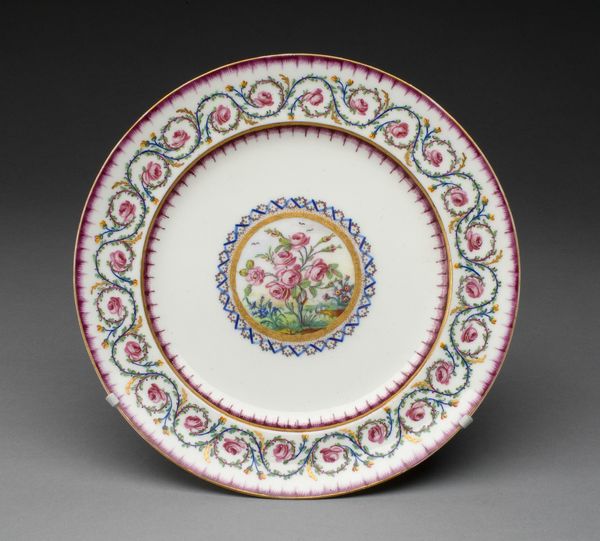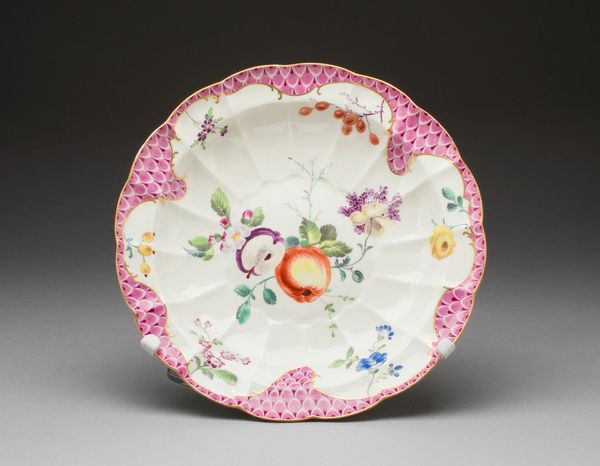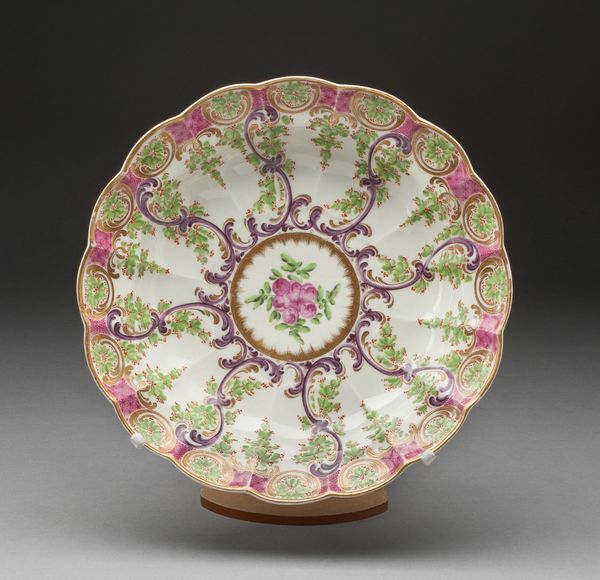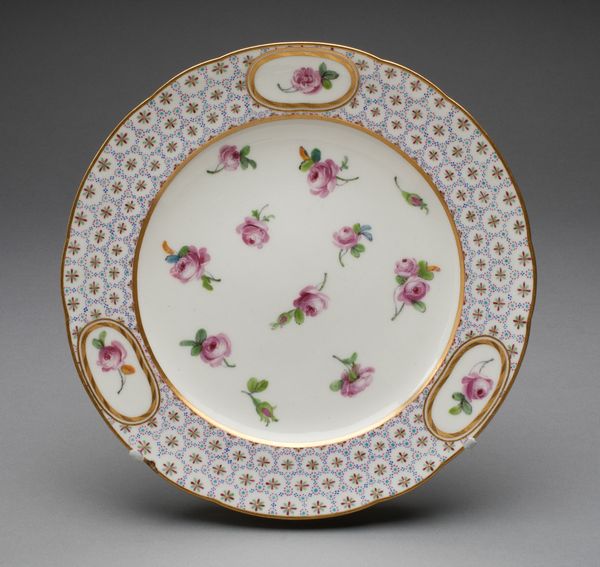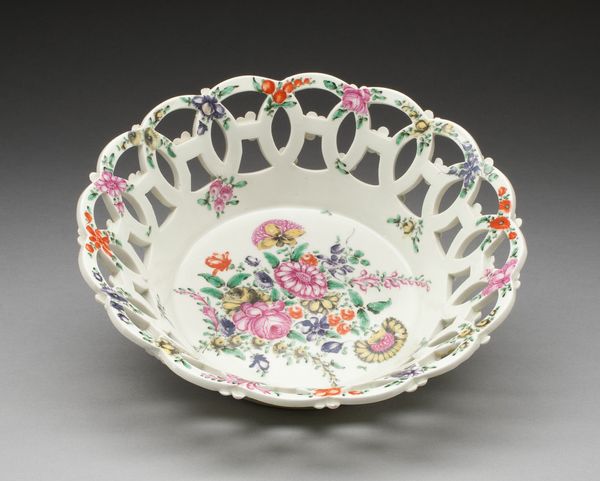
ceramic, porcelain
#
ceramic
#
porcelain
#
decorative-art
#
rococo
Dimensions: Diameter: 25 cm (9 7/8 in.)
Copyright: Public Domain
Curator: This lovely piece is a plate produced between 1758 and 1759 by the Manufacture nationale de Sèvres. Crafted from porcelain, it resides in the Art Institute of Chicago's collection. Editor: My initial impression is overwhelmingly delicate and feminine. The pastel florals, the scalloped edge, the use of gold—it feels incredibly precious and almost weightless. Curator: Absolutely. Sèvres porcelain represents the pinnacle of Rococo artistry. It speaks volumes about the cultural values of the French aristocracy. Each piece embodies ideals of refinement and leisure during the pre-revolutionary era. The delicate floral arrangements would have been quite meaningful. Editor: Exactly. The materials themselves - the porcelain sourced and worked by artisans in Sèvres and decorated so meticulously with gilding - tell a story about labor and luxury, power and access. How did they achieve that crisp green? Curator: This "vert pomme," or apple green, was a highly sought-after color developed through closely guarded chemical processes. It signals innovation alongside the exploitation of labor to achieve its decorative allure, much like the pink shades were a matter of great interest from an aesthetic perspective during this period. Editor: Yes, it's interesting to think about the relationship between that high-society aesthetic and the industrial processes that birthed it. Each delicate brushstroke required someone's careful hand. Even now, we might overlook those realities focusing on the decorative appeal alone. Curator: I think you’ve hit upon a central tension: we are drawn in by the superficial elegance but a deeper reading encourages consideration of the politics surrounding access to raw materials, like porcelain itself and production systems of the period. What was being excluded in the name of beauty and taste? Editor: Well, now I look at it thinking of the many hours of work that were required for it to come into existence! It's amazing how such a small object holds so much social context once you begin to ask these questions. Curator: Indeed. By considering historical context and means of production, we move beyond the visual and grapple with larger questions about privilege and the artistic landscape during a turbulent period. Editor: Looking closely allows a deeper engagement with not only what this plate represents, but the people and processes that brought it to life.
Comments
No comments
Be the first to comment and join the conversation on the ultimate creative platform.

